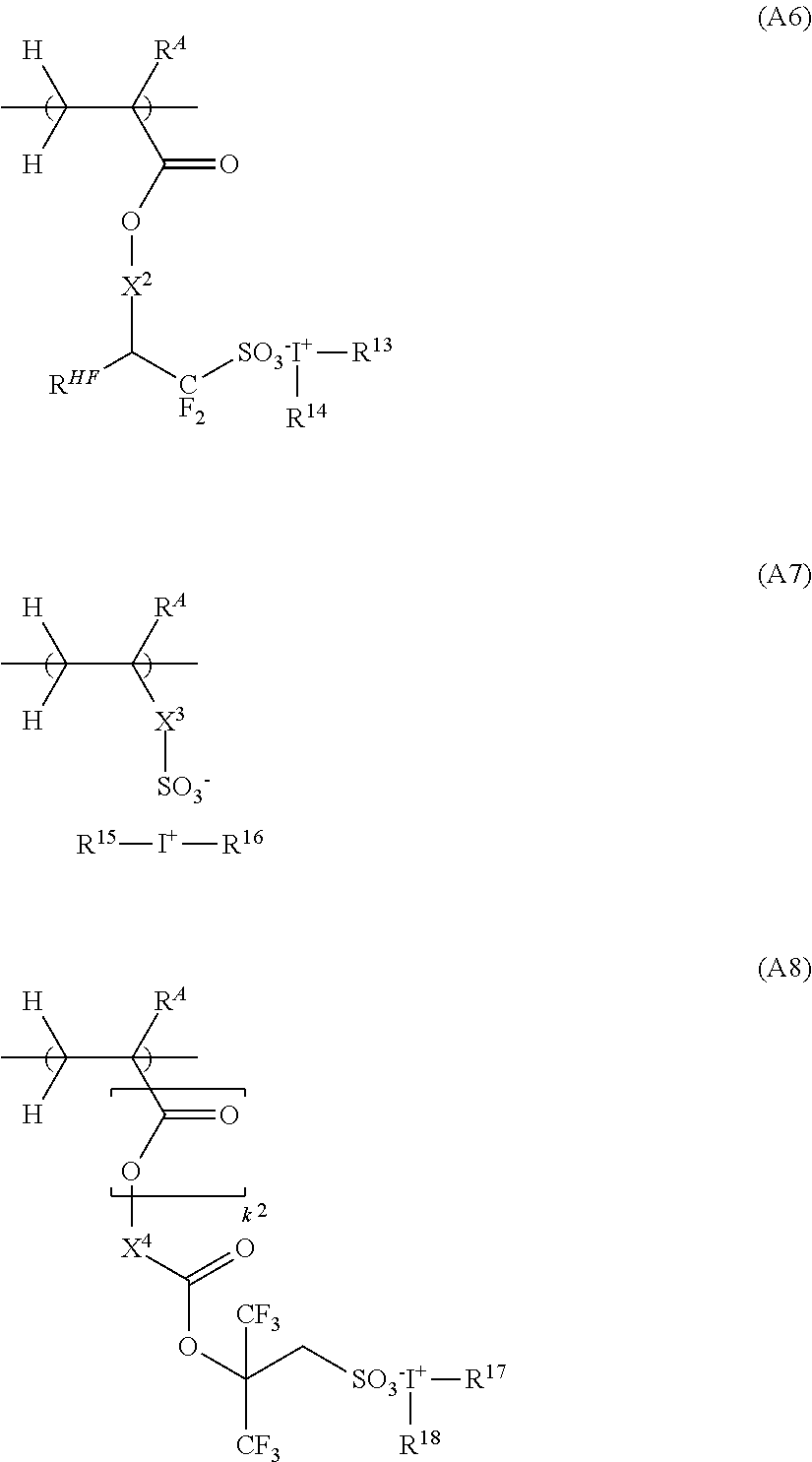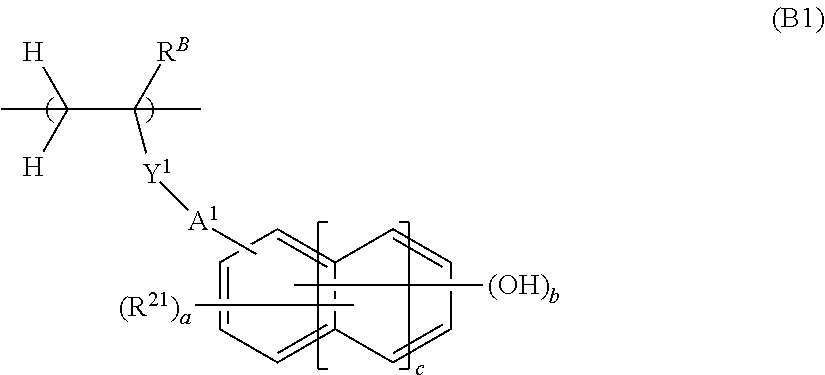Chemically amplified positive resist composition and resist pattern forming process
a technology of amplified positive resist and composition, which is applied in the direction of photomechanical equipment, instruments, originals for photomechanical treatment, etc., can solve the problems of non-uniform distribution of pattern finish size, degradation of resolution and ler, and long time-consuming operation of successive scanning of all finely divided regions on the work surface. , to achieve the effect of reducing ler, good profile and high resolution
- Summary
- Abstract
- Description
- Claims
- Application Information
AI Technical Summary
Benefits of technology
Problems solved by technology
Method used
Image
Examples
synthesis example 1
[0233]Synthesis of sulfonium salt PM-1
[0234]Sodium 3,3,3-trifluoro-2-hydroxy-2-trifluoromethylpropane-1-sulfonate was synthesized according to the method of U.S. Pat. No. 8,283,104 (JP-A 2010-215608). To 132 g of an aqueous solution containing sodium 3,3,3-tifluoro-2-hydroxy-2-trifluoromethylpropane-1-sulfonate (corresponding to 0.1 mol of sodium 3,3,3-trifluoro-2-hydroxy-2-tifluoromethylpropane-1-sulfonate), 200 g of methylene chloride and 20.4 g of benzyltrimethylammonium chloride were added, followed by 30 minutes of stirring. After stirring, the aqueous solution was subjected to separatory operation, extraction and water washing. The organic layer was concentrated. Methyl isobutyl ketone was added to the concentrate, followed by concentration again. Diisopropyl ether was added to the concentrate for recrystallization. The solid precipitate was collected and dried in vacuum, yielding a benzyltrimethylammonium salt.
[0235]To the benzyltrimethylammonium salt, 15.0 g of triethylamine...
synthesis example 2-1
[0236]Synthesis of Polymer P-1
[0237]In nitrogen atmosphere, a 200-mL dropping cylinder was charged with 25.5 g of a 50.0 wt % PGMEA solution of 4-hydroxystyrene, 9.3 g of ethylcyclopentyl methacrylate, 12.7 g of 1-(1-methylcyclopentyloxy)-4-vinylbenzene, 17.5 g of PM-1, 4.1 g of dimethyl-2,2′-azobis(2-methylpropionate) (tradename V-601 by Fujifilm Wako Pure Chemical), and 24 g of γ-butyrolactone and 30 g of PGMEA as solvent to form a monomer solution.
[0238]In nitrogen atmosphere, a 300-mL flask was charged with 40 g of γ-butyrolactone and heated at 80° C. The monomer solution was added dropwise to the flask over 4 hours. After the completion of dropwise addition, the polymerization solution was continuously stirred for 18 hours while maintaining its temperature at 80° C. The polymerization solution was cooled to room temperature and added dropwise to 400 g of diisopropyl ether. The solution was statically held whereupon a solid precipitated. Diisopropyl ether was decanted off and th...
synthesis examples 2-2 to 2-58
and Comparative Synthesis Examples 1-1 to 1-2
[0239]Synthesis of Polymers P-2 to P-58 and Comparative Polymers cP-1 to cP-2
[0240]Polymers P-2 to P-58 and Comparative Polymers cP-1 to cP-2 were synthesized by the same procedure as Synthesis Example 2-1 except that the type and amount (mol %) of monomers were changed. hi Table 1, the incorporation ratio is a molar ratio.
TABLE 1IncorporationIncorporationIncorporationIncorporationIncorporationratioratioratioratioratioUnit 1(mol %)Unit 2(mol %)Unit 3(mol %)Unit 4(mol %)Unit 5(mol %)MwMw / MnP-1PM-110.0A-140.0C-125.0C-525.0——18,0001.78P-2PM-110.0A-140.0B-110.0C-120.0C-520.017,4001.79P-3PM-110.0A-140.0B-210.0C-120.0C-520.017,6001.77P-4PM-210.0A-140.0B-210.0C-120.0C-520.017,9001.78P-5PM-210.0A-140.0B-310.0C-120.0C-520.017,5001.76P-6PM-210.0A-140.0B-410.0C-120.0C-520.017,4001.78P-7PM-210.0A-140.0B-210.0C-220.0C-620.017,7001.77P-8PM-210.0A-140.0B-210.0C-320.0C-520.017,7001.75P-9PM-210.0A-140.0B-210.0C-420.0C-520.017,8001.76P-10PM-210.0A-140.0B-2...
PUM
| Property | Measurement | Unit |
|---|---|---|
| mol % | aaaaa | aaaaa |
| acid strength pKa | aaaaa | aaaaa |
| feature size | aaaaa | aaaaa |
Abstract
Description
Claims
Application Information
 Login to View More
Login to View More - R&D
- Intellectual Property
- Life Sciences
- Materials
- Tech Scout
- Unparalleled Data Quality
- Higher Quality Content
- 60% Fewer Hallucinations
Browse by: Latest US Patents, China's latest patents, Technical Efficacy Thesaurus, Application Domain, Technology Topic, Popular Technical Reports.
© 2025 PatSnap. All rights reserved.Legal|Privacy policy|Modern Slavery Act Transparency Statement|Sitemap|About US| Contact US: help@patsnap.com



